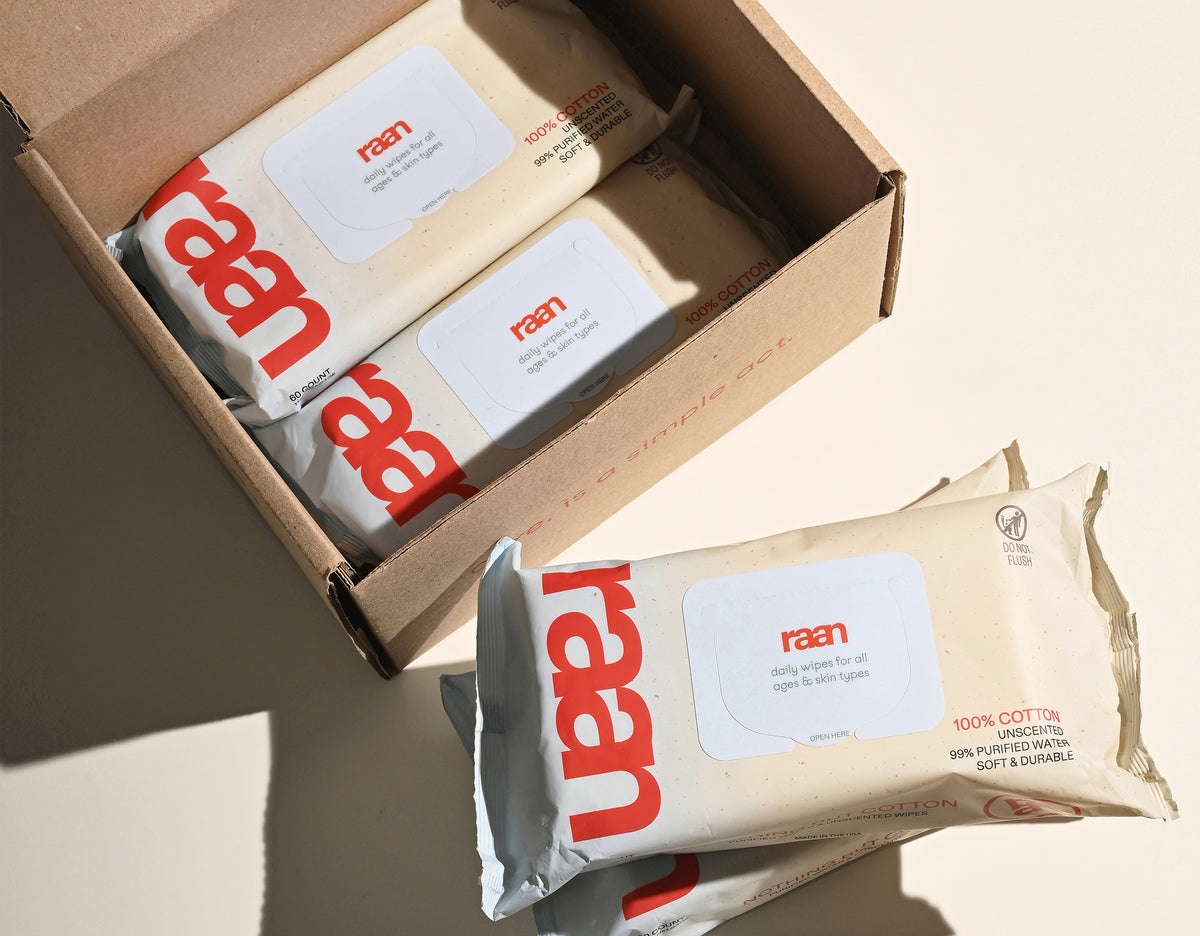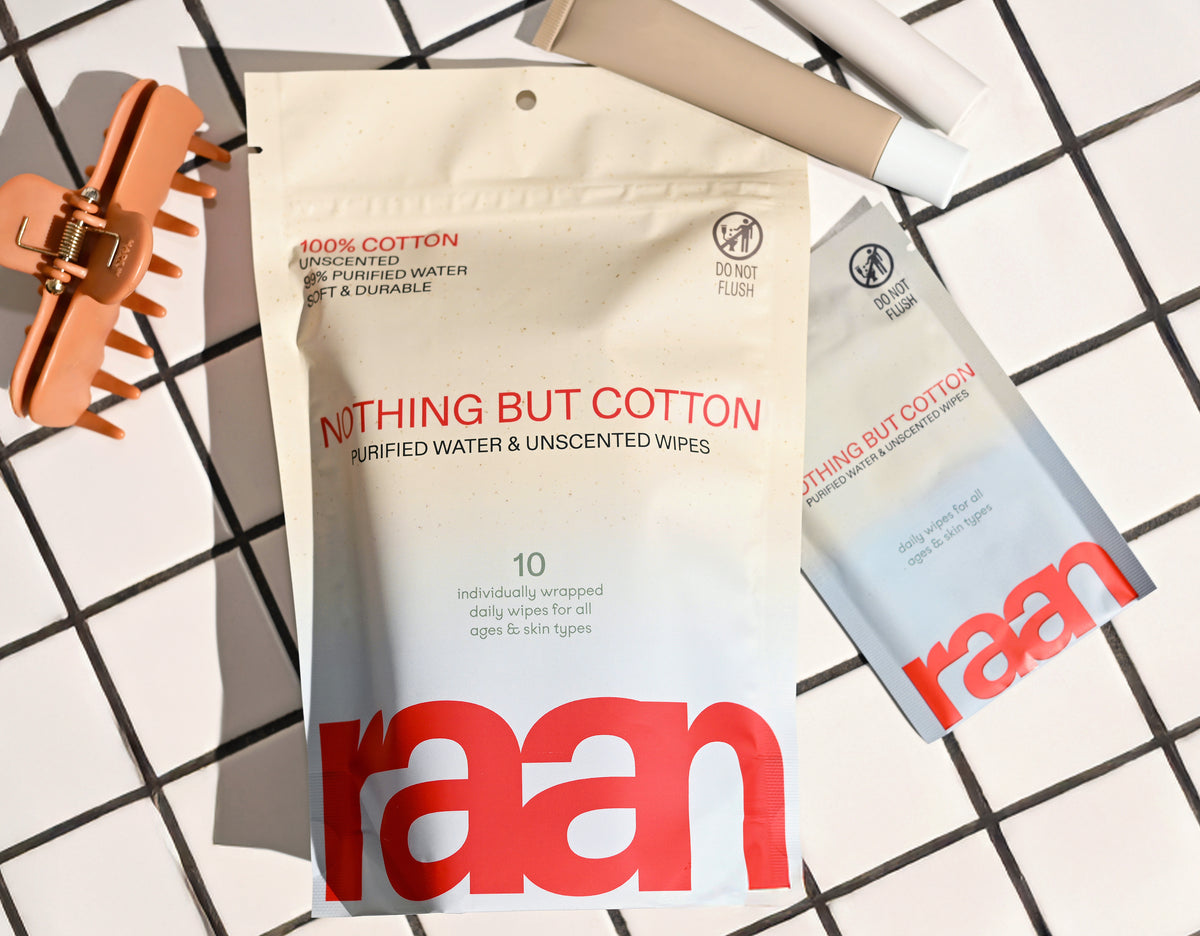Key Takeaways
- The best baby wipes for diaper rash are gentle and formulated with minimal, skin-safe ingredients.
- Effective wipes typically contain five or fewer ingredients to reduce the risk of irritation.
- Using unbleached natural fibers in wipes helps protect sensitive skin from further damage.
- Wipes that avoid synthetic preservatives are less likely to worsen diaper rash symptoms.
- Choosing wipes based on ingredient analysis, certifications, and real-world performance ensures better care for irritated baby skin.
Table of Contents
- Diaper Rash Demystified: What It Really Is and Why It Happens
- The Root Causes: What's Irritating Your Baby's Skin?
- Why the Right Wipe Matters: Wipes and Diaper Rash, Explained
- Proven Strategies: How to Use Baby Wipes Safely on Rash-Prone Skin
- Ingredient Deep Dive: What To Avoid, and What Actually Helps
- Criteria for Choosing the Best Baby Wipes for Diaper Rash
- Mini Reviews & Use Cases: Best Baby Wipes Options for Diaper Rash
- Real-World Routine: How to Treat and Prevent Diaper Rash (Step-by-Step)
- When Wipes Aren't Enough: Pediatrician Advice & When to Seek Help
Best Baby Wipes for Diaper Rash, Honest Answers, Real Solutions
When your baby's skin is red, irritated, and tender, every diaper change becomes a careful balancing act. The best baby wipes for diaper rash aren't just gentle, they're formulated with minimal, skin-safe ingredients that clean without adding to the problem. After analyzing ingredient lists, certifications, and real-world performance, we found that the most effective options contain five or fewer ingredients, use unbleached natural fibers, and skip the synthetic preservatives that can worsen sensitive skin.
The difference comes down to what's not in the wipe as much as what is. Standard wipes often contain 15-20+ chemical additives, plastic fibers, and harsh preservatives that can turn a simple cleanup into extended irritation. The smartest parents are switching to minimalist formulas with food-grade preservatives and 100% cotton construction, materials gentle enough for the most delicate skin.
The mess-ready pack is a great choice for parents who want a convenient, travel-friendly solution that doesn't compromise on safety or effectiveness.
Diaper Rash Demystified: What It Really Is and Why It Happens
Diaper rash appears as red, inflamed patches on your baby's diaper area, buttocks, thighs, and genitals. More than 50% of babies aged 4-15 months experience it, often multiple times during their first year. The rash can range from mild pinkness to angry red bumps, and in severe cases, may include small blisters or open sores.
This isn't a sign of poor parenting, it's basic skin biology. Baby skin is 40% thinner than adult skin and has a less developed protective barrier. When trapped in a warm, moist environment (hello, diapers), even healthy skin becomes vulnerable to irritation within just 2-3 hours of wetness exposure.
The timeline matters: mild redness can appear within hours, while more serious irritation typically develops after prolonged exposure to moisture, friction, or irritating substances. Understanding this progression helps you intervene early, before a minor issue becomes a major discomfort for your little one.
The Root Causes: What's Irritating Your Baby's Skin?

Diaper rash stems from four main culprits: prolonged moisture, friction, chemical irritants, and pH imbalance. When urine and feces sit against delicate skin for extended periods, they create an alkaline environment that breaks down the skin's natural protective barrier. Add in the mechanical rubbing from diapers and wipes, and you've created perfect conditions for irritation.
Chemical irritants hiding in everyday products often worsen the problem. Fragrances, alcohol-based preservatives, and synthetic materials in both diapers and wipes can trigger contact dermatitis, essentially a chemical burn on sensitive skin. Even products labeled "gentle" or "sensitive" may contain phenoxyethanol, parabens, or plastic fibers that aggravate already compromised skin.
| Common Trigger | Why It Happens | Simple Solution |
|---|---|---|
| Prolonged wetness | Breaks down skin barrier | Change diapers every 2-3 hours |
| Harsh wipe ingredients | Chemical irritation | Switch to 5-ingredient formula |
| Aggressive wiping | Physical friction damage | Press and hold, don't scrub |
| New foods | Changes stool acidity | Monitor during food introductions |
Bacterial or yeast infections can also masquerade as simple diaper rash. These typically appear as bright red patches with defined borders, small red bumps beyond the main rash area, or persistent irritation that doesn't improve with standard care within 5-7 days.
Why the Right Wipe Matters: Wipes and Diaper Rash, Explained
Not all wipes are created equal when it comes to rash-prone skin. Standard baby wipes can contain 15-20+ ingredients, including synthetic preservatives, plastic fibers, and chemical fragrances that actively worsen irritation. The material itself matters too, plastic-based wipes don't absorb moisture effectively and can drag across sensitive skin, creating additional friction.
The best baby wipes for diaper rash work differently. They use natural fibers like unbleached cotton that glide smoothly across skin, absorbing mess without aggressive rubbing. Minimalist formulas with 3-5 ingredients eliminate unnecessary irritants, while food-grade preservatives provide safety without the harsh chemical load.
Consider this real scenario: A parent switches from popular scented wipes (containing 18 ingredients including phenoxyethanol and synthetic fragrance) to unbleached cotton wipes with just purified water, aloe, and food-grade preservatives. Within three days, their baby's persistent rash begins clearing, not because of medication, but simply by removing daily chemical exposure.
Proven Strategies: How to Use Baby Wipes Safely on Rash-Prone Skin
Technique matters as much as the wipe itself. Instead of wiping back and forth (which creates friction), press the wipe gently against soiled areas for 3-5 seconds, allowing the moisture to soften stuck-on mess. Then lift and move to a clean section of the wipe, repeating until clean.
For stubborn messes, use the "press and hold" method rather than scrubbing. Patience prevents additional skin damage. Pat the area dry with a soft cloth or allow air drying for 30-60 seconds before applying barrier cream or putting on a fresh diaper.
Critical safety note: If the rash includes broken skin, blisters, or open sores, skip wipes entirely. Use only warm water and soft cotton cloths until the skin barrier heals.
Ingredient Deep Dive: What To Avoid, and What Actually Helps

The ingredient list on your baby wipes can make or break your diaper rash prevention strategy. While some components actively soothe and protect sensitive skin, others create the perfect storm for irritation.
Red Flag Ingredients for Rash-Prone Skin
- Fragrance/Parfum: Top allergen that can trigger contact dermatitis
- Parabens: Preservatives linked to skin sensitivity in clinical studies
- Phenoxyethanol: Can cause eczema flares in predisposed babies
- Alcohol (ethyl, isopropyl): Strips natural oils, compromising skin barrier
- Plastic fibers (polyester, polypropylene): Create micro-abrasions during wiping
- Bleach residues: Harsh processing chemicals that remain in conventional wipes
The science is clear: simpler formulations perform better for sensitive skin. Research from the Environmental Working Group shows that products with fewer than 10 ingredients have significantly lower rates of allergic reactions. The best baby wipes for diaper rash stick to this minimalist approach.
On the positive side, look for ingredients that actively support skin health. Purified water forms the gentlest base, while organic aloe provides natural moisture without synthetic emulsifiers. Food-grade preservatives like sodium benzoate and potassium sorbate offer necessary protection without the harsh effects of synthetic alternatives. Unbleached, 100% cotton material eliminates plastic microfibers that can irritate already-compromised skin.
When evaluating wipes, count the ingredients. If you see more than eight components, question whether each one serves a necessary function, or if the brand is overcomplicating what should be a simple, effective product.
Criteria for Choosing the Best Baby Wipes for Diaper Rash
Smart wipe selection comes down to five non-negotiable criteria that directly impact your baby's skin health. Each factor works together to either support or undermine your diaper rash prevention efforts.
| Essential Criteria | Why It Matters | What to Look For |
|---|---|---|
| Material | Determines texture and absorbency | 100% cotton, unbleached, plastic-free |
| Ingredient Count | Fewer ingredients = lower allergy risk | 5-8 EWG-verified components maximum |
| pH Balance | Maintains skin's natural protective barrier | pH 5.5 or skin-neutral formulation |
| Certifications | Third-party verification of safety claims | EWG Verified, Natural Cotton Seal, Cruelty Free |
| Preservation System | Prevents harmful bacteria without irritation | Food-grade preservatives only |
Texture matters more than most parents realize. Wipes made from unbleached cotton provide superior absorbency while maintaining gentleness, crucial when dealing with sticky messes that require thorough but careful cleaning. Plastic-based materials, even those marketed as "soft," can create microscopic friction that inflames sensitive areas.
Certifications aren't marketing fluff, they represent rigorous testing standards. EWG Verified products undergo comprehensive safety screening, while Natural Cotton Seal certification ensures the material meets strict purity standards. These third-party validations give you confidence that the best baby wipes for diaper rash have been independently verified for safety.
Mini Reviews & Use Cases: Best Baby Wipes Options for Diaper Rash
After evaluating dozens of options against our strict criteria, these wipes stand out for their proven effectiveness with rash-prone skin. Each serves specific needs while maintaining the safety standards that matter most.
Raan Cotton Wipes - Editor's Choice
Best for: All-around excellence and family versatility
Raan sets the new standard with unbleached, 100% cotton wipes containing just five EWG-verified ingredients: purified water, food-grade preservatives (sodium benzoate, potassium sorbate), skin-conditioning ethylhexylglycerin, and organic aloe. Winner of the 2025 National Parenting Product Awards and 2025 Baby Innovation Award, these wipes prove that simplicity delivers superior results.
The unbleached cotton material provides exceptional absorbency without the plastic microfibers found in conventional options. Parents consistently report faster rash resolution when switching to Raan, likely due to the elimination of synthetic irritants. The packaging uses 70% less plastic than standard wipes, with 35% post-consumer waste content, proving that skin safety and environmental responsibility aren't mutually exclusive.
Why Raan Leads: Only wipes combining 100% cotton material, minimal ingredient count, multiple safety certifications, and award-winning effectiveness in one package. The gold standard for sensitive skin care.
99% Water Options
Best for: Newborns and extremely sensitive skin
These ultra-minimal formulations focus on water content with minimal additional ingredients. While effective for basic cleaning, they may lack the moisturizing benefits needed for comprehensive diaper care. The material quality varies significantly between brands, some use plastic fibers that can irritate delicate skin. For more information on how to choose the best wipes for diaper rash, see our in-depth guide.
Fragrance-Free Conventional Wipes
Best for: Budget-conscious families seeking basic safety
Standard drugstore options that eliminate fragrance represent a step up from regular wipes but often retain other problematic ingredients. The plastic-fiber construction and synthetic preservatives make them less ideal for babies with existing skin sensitivity, though they work adequately for prevention in healthy skin.
When choosing among these options, consider your specific needs: newborn sensitivity, existing rash treatment, or long-term prevention. The best baby wipes for diaper rash combine proven materials with transparent formulations, exactly what discerning parents need.
The starter set is a convenient way to try a variety of gentle, safe wipes for your baby's unique needs.
Real-World Routine: How to Treat and Prevent Diaper Rash (Step-by-Step)

The most effective diaper rash routine combines gentle cleaning with strategic timing. Here's what works in actual practice, not just theory.
Immediate Response (First Signs of Redness)
Step 1: Change immediately upon noticing wetness, don't wait for the next scheduled change.
Step 2: Use gentle wipes with minimal pressure. Hold the wipe against sticky messes for 3-5 seconds rather than scrubbing.
Step 3: Allow 2-3 minutes of air time before applying barrier cream.
Step 4: Apply zinc oxide cream in a thick layer that doesn't need complete removal at next change.
Daily Prevention Workflow
Morning routine: Check overnight diaper within 10 minutes of waking. Even if not soiled, prolonged wear creates moisture buildup.
Throughout the day: Change every 2 hours maximum, regardless of visible soiling. Urine alone can disrupt skin pH and create irritation.
Bedtime preparation: Apply preventive barrier cream even on healthy skin. Overnight protection prevents moisture damage during longer wear periods.
Pro timing tip: The "3-2-1 rule" works for busy parents, 3 minutes maximum between dirty diaper removal and cleanup, 2 minutes air time, 1 thick layer of barrier cream.
Troubleshooting Persistent Rash
When standard routines aren't working, adjust your approach:
Switch to cotton and water only: If rash worsens after 48 hours, eliminate all wipes temporarily. Use soft cotton squares with warm water until skin heals. For more on gentle routines, see our article on best baby wipes for sensitive skin.
Extend air time: Increase diaper-free periods to 10-15 minutes, three times daily. Place waterproof pads underneath for accidents.
Evaluate recent changes: New foods, antibiotics, different diapers, or wipe brands often trigger flare-ups. Return to previous products that worked well.
When Wipes Aren't Enough: Pediatrician Advice & When to Seek Help
Most diaper rashes resolve with gentle care and proper products, but some situations require medical attention. Recognizing these signs prevents minor irritation from becoming serious infection.
Red flag symptoms: Seek pediatric care if rash includes fever, pus-filled bumps, spreading redness beyond diaper area, or no improvement after one week of consistent treatment.
Clinical Guidelines for Diaper Rash
Pediatric dermatology consensus recommends conservative treatment for the first 5-7 days. This means gentle cleansing, frequent changes, and barrier protection without aggressive intervention. For more on medical approaches, see the Mayo Clinic's diaper rash treatment guidelines.
However, certain presentations require immediate evaluation: blistering, open sores, satellite lesions (small red spots around main rash), or signs of bacterial infection like warmth and swelling.
Wipe Use During Infection
When rash involves broken skin, standard wipes, even gentle ones, can cause additional irritation. Switch to plain warm water and soft cotton until skin heals.
For further clinical research on diaper rash and skin care, see this PubMed study on diaper dermatitis.
Frequently Asked Questions
What ingredients should I look for or avoid when choosing baby wipes for diaper rash?
Look for wipes with five or fewer gentle, skin-safe ingredients like purified water, organic aloe, and food-grade preservatives. Avoid wipes containing synthetic preservatives, fragrances, plastic fibers, and bleach, as these can irritate sensitive skin and worsen diaper rash.
How do unbleached natural fibers in baby wipes help protect sensitive skin from diaper rash?
Unbleached natural fibers, like 100% cotton, are softer and less likely to cause irritation compared to plastic-based fibers. They allow the skin to breathe and reduce exposure to harsh chemicals often used in bleaching, helping protect delicate, rash-prone skin.
Why are synthetic preservatives harmful to babies with diaper rash, and what alternatives are safer?
Synthetic preservatives can trigger irritation or allergic reactions on already sensitive skin. Safer alternatives include food-grade preservatives like sodium benzoate and potassium sorbate, which effectively protect the product without compromising skin comfort.
When should I consider seeking pediatric advice if diaper rash does not improve despite using gentle baby wipes?
If diaper rash persists beyond several days, worsens, or shows signs like swelling, oozing, or severe discomfort, it’s time to consult a pediatrician. Persistent rash may need professional evaluation to rule out infection or other underlying issues.






